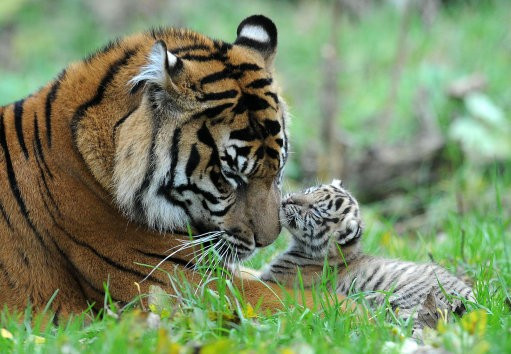How Tigers Got Their Stripes

Researchers from King's College, London, have proven that tiger stripes are formed because of morphogens - a substance secreted by group of cells.
In 1950, Alan Turing, a famous code-breaker and mathematician suggested that repetitive patterns in biological systems were generated by a pair of morphogens that worked together as an "activator" and "inhibitor", of each cell.
Turing suggested the combined activity of these two morphogens were the reasons why some animals had stripes... and some spots.
The researchers sought to test theory on lab mice.
During the experiment, they studied the development of regularly spaced ridges found in the roof of the mouse's mouth. The team then experimented with mouse embryos and identified a pair of morphogens - Fibroblast Growth Factor and Sonic Hedgehog - which worked together to influence where each ridge was formed.
They found that an increase or decrease in the activities of these morphogens corresponded with changes in the patterns of ridges, thereby provisionally proving Turing's equations. The discovery suggested that the morphogens could, therefore, also play a role in forming stripes on a tiger's skin.
"Regularly spaced structures, from vertebrae and hair follicles to the stripes on a tiger or zebrafish, are a fundamental motif in biology. There are several theories about how patterns in nature are formed, but until now there was only circumstantial evidence for Turing's mechanism. Our study provides the first experimental identification of an activator-inhibitor system at work in the generation of stripes - in this case, in the ridges of the mouth palate," said Dr Jeremy Green from the Department of Craniofacial Development at King's Dental Institute.
"Not only does this show us how patterns such as stripes are formed, but it provides confidence that these morphogens (chemicals) can be used in future regenerative medicine to regenerate structure and pattern when differentiating stem cells into other tissues," he added.
© Copyright IBTimes 2024. All rights reserved.





















